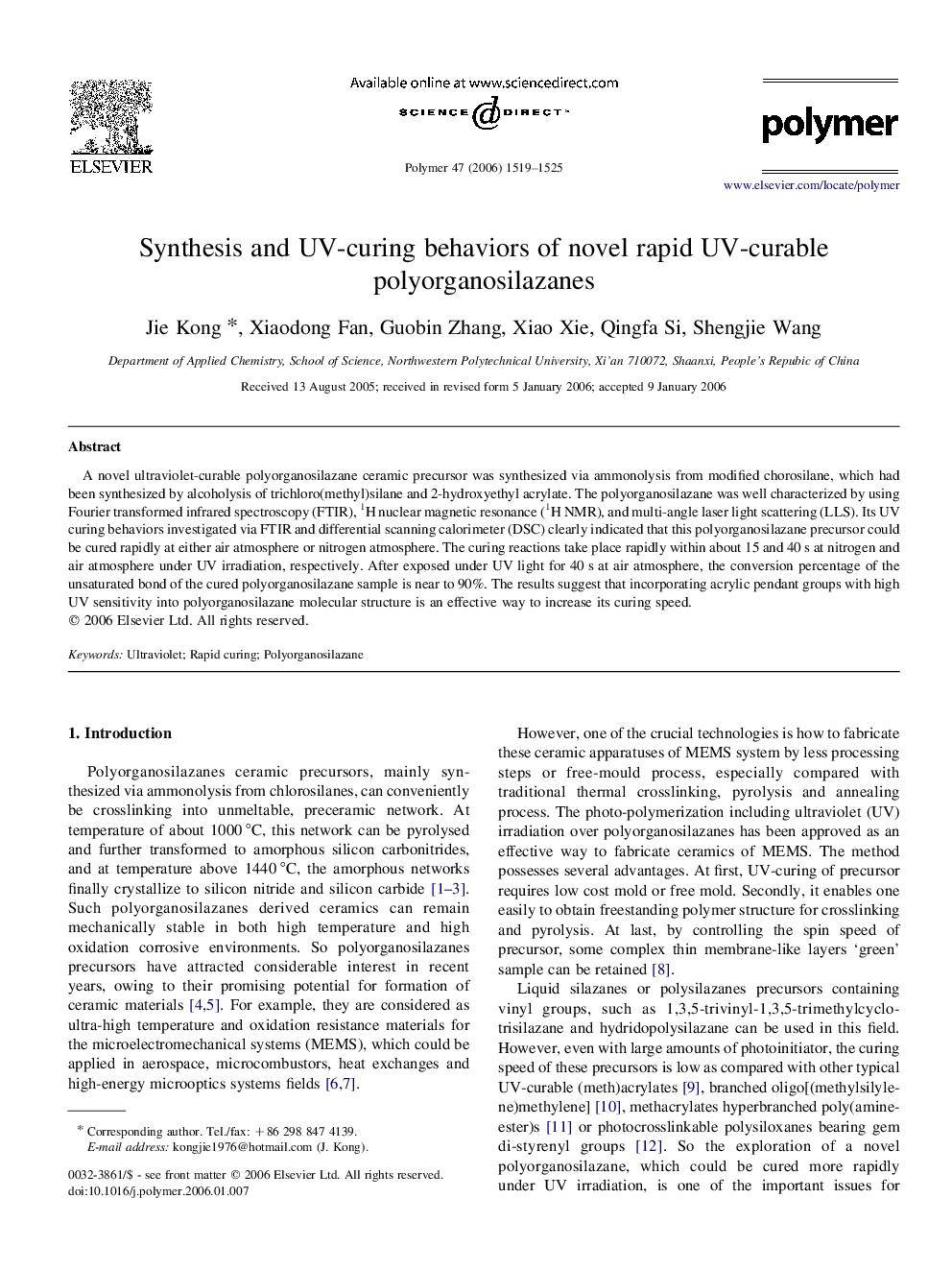| Article ID | Journal | Published Year | Pages | File Type |
|---|---|---|---|---|
| 5189191 | Polymer | 2006 | 7 Pages |
Abstract
A novel ultraviolet-curable polyorganosilazane ceramic precursor was synthesized via ammonolysis from modified chorosilane, which had been synthesized by alcoholysis of trichloro(methyl)silane and 2-hydroxyethyl acrylate. The polyorganosilazane was well characterized by using Fourier transformed infrared spectroscopy (FTIR), 1H nuclear magnetic resonance (1H NMR), and multi-angle laser light scattering (LLS). Its UV curing behaviors investigated via FTIR and differential scanning calorimeter (DSC) clearly indicated that this polyorganosilazane precursor could be cured rapidly at either air atmosphere or nitrogen atmosphere. The curing reactions take place rapidly within about 15 and 40Â s at nitrogen and air atmosphere under UV irradiation, respectively. After exposed under UV light for 40Â s at air atmosphere, the conversion percentage of the unsaturated bond of the cured polyorganosilazane sample is near to 90%. The results suggest that incorporating acrylic pendant groups with high UV sensitivity into polyorganosilazane molecular structure is an effective way to increase its curing speed.
Keywords
Related Topics
Physical Sciences and Engineering
Chemistry
Organic Chemistry
Authors
Jie Kong, Xiaodong Fan, Guobin Zhang, Xiao Xie, Qingfa Si, Shengjie Wang,
